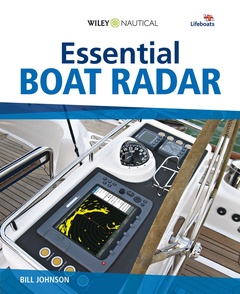The idea is to guide the reader into the subject by first giving them enough information to understand whats going on (very clearly explained,) and then leading straight into basic radar use. This means explaining a bit about what radar is and does (and doesnt do), explaining how to make basic adjustments to get a decent picture, and then looking at how to use the basic radar for the two things its good at. This is followed by more detail: first, more information on the various confusions and anomalies that the picture can present, and then on the more complex functionality that a modern digital (raster) set provides. Finally, what to look for when choosing a radar for your boat, and how to install it. CONTENT BY CHAPTER 1 Introduction Presents the wonder of radar so that people keep reading! Advantages of radar. What radar can do. Set expectations also about what it doesnt do. What you need to know, what practical skills you will need. Guide to the books content. 2 Radar what it does and how it works Basic physics of what it does and how very simple and explained clearly. Basic interpretation of the picture (what are the blobs on the screen?). Range limitations (horizon) and other basic limitations (moving platform, beam width, shadows). 3 Basic machine and controls how to get a good picture Power - standby/transmit brilliance, gain, range, tuning, clutter adjustments (s big thing. Importance of adjusting the picture, what you are likely/unlikely to pick up, radar reflectors. Practical approach to tracking targets for collision avoidance. 5 How to use radar for navigation and pilotage The techniques, with and without a combined radar/map display. 6 Radar confusion and anomalies more on how to interpret the picture Back to the physics, and explains the more obscure and confusing effects you can get. Reflections interference side lobes rain clutter. 7 Modern radar more advanced functions Guide to modern radar functionality, particularly different orientation of picture, lookahead mode, getting the lat/long of targets, tracking weather, guard zones, alarms, integration with chart plotters etc 8 Choosing and installing a radar What to look for (e.g. scanner size, power, functionality) and how to guide. 9 Glossary course content and description.




